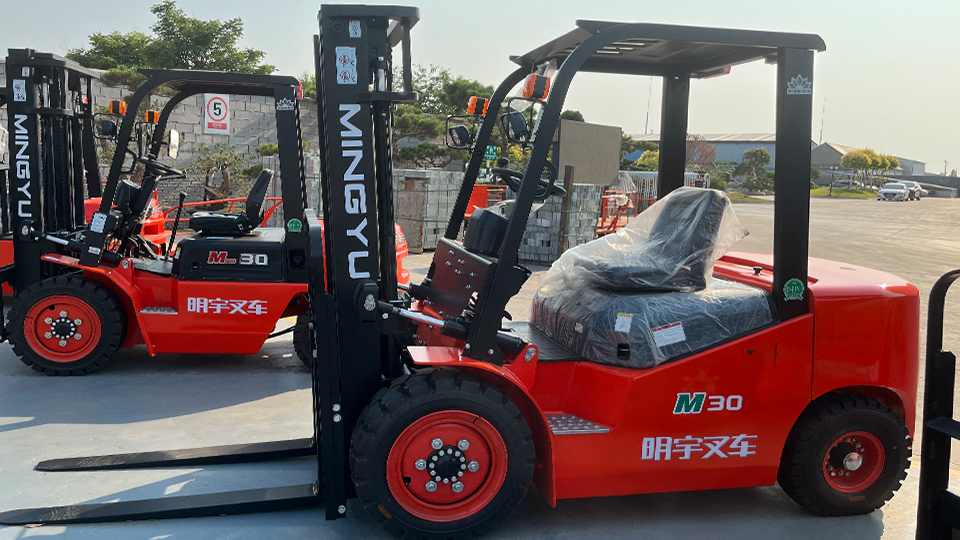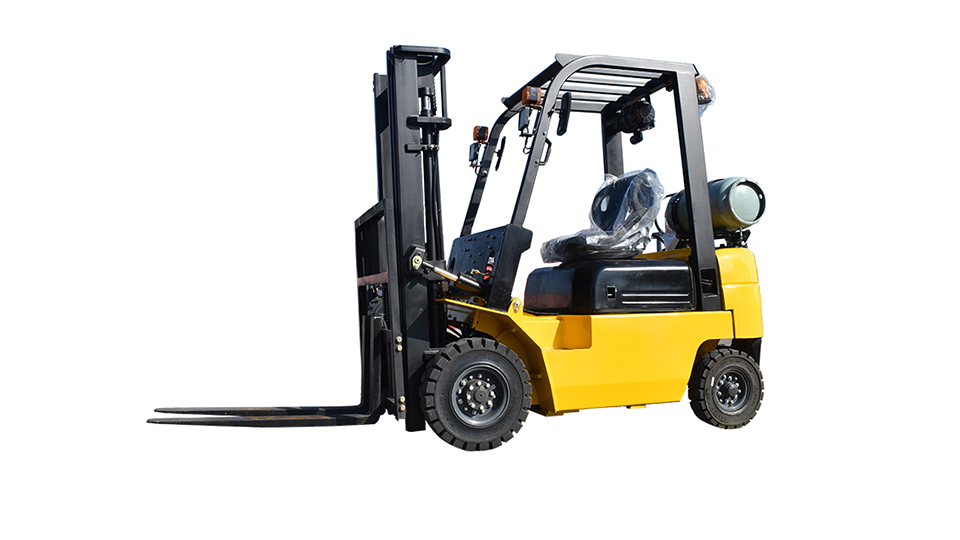
The Technical Roadmap to Forklift Certification: Safety, Standards, and Success
I. Introduction: The Mandate of OSHA 29 CFR 1910.178
Forklift certification is not a bureaucratic hurdle; it is a mandated technical requirement designed to enforce workplace safety.1 In the United States, the legal foundation for this requirement is the Occupational Safety and Health Administration (OSHA) standard 29 CFR 1910.178 (Powered Industrial Trucks).2 This standard places the primary legal responsibility for training and certification directly on the employer, not the individual.3
The process of certification is defined by a rigorous three-part methodology:
Formal Instruction: The theoretical, classroom-based knowledge.
Practical Training: Hands-on experience under supervision.4
Performance Evaluation: A final, on-the-job skills test.5
The core purpose is to ensure every operator understands the physics of lift truck operation, the site-specific hazards of their workplace, and the strict protocols required to manage them.

II. Step 1: Formal Instruction—Mastering the Theory
The formal instruction phase is the didactic component where the technical knowledge underpinning safe operation is imparted. This can be delivered via lecture, video, online interactive modules, or written materials, and it must cover specific topics outlined by OSHA.6
A. The Physics of the Stability Triangle
The most crucial technical concept for any operator is the Stability Triangle . This is an imaginary, three-point base formed by the two load wheels (the front axle pivot points) and the center pivot point of the steer axle.7
Longitudinal Stability (Forward/Backward): This stability is governed by the imaginary line connecting the two front wheel pivots (the load axle). The combined center of gravity (CCG) of the truck and the load must remain behind this fulcrum to prevent a forward tip-over.8 The counterbalance weight on the rear of the truck is the critical engineering factor here.
Lateral Stability (Sideways): This is the resistance to overturning sideways, which is most often compromised during turns, driving on slopes, or operating with an elevated load.9 The CCG must remain within the sides of the triangle.10
Dynamic Stability: This accounts for the forces of motion—sudden braking, rapid acceleration, or sharp turns—that cause the CCG to shift momentarily.11 Safe operation requires anticipating these shifts and keeping movements gradual to ensure the CCG stays safely within the triangle's confines.12
B. Equipment Classifications and Technical Data
Formal training must cover the different classes of powered industrial trucks, as the physics and controls vary dramatically:
|
Class |
Type of Equipment |
Example Technical Differences |
|
I |
Electric Motor Counterbalanced (Sit-down) |
Low center of gravity, highly maneuverable. |
|
II |
Electric Motor Narrow Aisle (Reach Trucks) |
Lateral battery positioning, very tight turning radius. |
|
III |
Electric Motor Hand/Rider (Pallet Jacks) |
Operator walks or stands on a platform; low lift height. |
|
IV/V |
Internal Combustion Engine (Cushion/Pneumatic Tire) |
Higher CCG, use of gasoline, diesel, or LPG fuel, requires ventilation protocols. |
|
VII |
Rough Terrain (Lumber/Construction) |
High ground clearance, greater stability issues on uneven terrain. |
Operators must learn to read and understand the data plate (or nameplate), which specifies the maximum capacity, load center, and mast vertical limit—the technical boundaries of the machine's safe operation.13
III. Step 2: Practical Training—Hands-On Competency
The goal of practical training is to translate theoretical knowledge into demonstrable, muscle-memory skills. This phase must be supervised by a "qualified person"—someone with the knowledge, training, and experience to train and evaluate operators.14
A. Pre-Operation Inspection (The "OSHA Daily Checklist")
Every session must begin with a thorough pre-shift inspection, which is an explicit OSHA requirement. This is a technical inspection covering critical safety systems:
Fluid and Mechanical Systems: Checking for hydraulic leaks, brake fluid levels, and visible damage to the mast, chains, and hoses.
Control Mechanisms: Testing the horn, lights, steering, tilt, and lift functions.
Restraint Systems: Verifying the seatbelt, operator restraints, and guards are functional.15
Tire/Wheel Condition: Checking for pressure, wear, and proper seating.
B. Core Operational Maneuvers
Trainees must execute practical exercises that demonstrate control under varying conditions:
Load Manipulation: Picking up, transporting (load carried 4-6 inches from the ground with mast tilted back), and stacking loads of varying sizes and weights.16
Aisle Navigation: Negotiating tight corners, blind intersections (using the horn), and passing through doorways.
Ramp/Grade Operation: Understanding the requirement to travel with the load upgrade and the forks downgrade to maintain longitudinal stability.
Dock Plate Protocol: Safely entering and exiting trailers, ensuring the dock plate is properly secured and capable of handling the forklift’s loaded weight.

IV. Step 3: Performance Evaluation and Certification
The final step is the formal evaluation. A written test alone is insufficient; the final certification requires the supervisor to observe and sign off on the operator’s ability to perform all required maneuvers safely in the actual workplace environment.
A. Documentation and Certification Records
OSHA compliance hinges on meticulous record-keeping.17 The employer must create a certification record that includes:
The name of the operator.
The date of the training and the date of the evaluation.
The identity of the person(s) who performed the training and evaluation.
This documentation (often a certificate or wallet card) is the only "license" recognized by the federal standard. The physical card acts as a portable verification of the required technical competency.
V. Maintaining Compliance: The Refresher Training Mandate
Certification is not a one-time event; it is an ongoing commitment to safety dictated by specific triggers in OSHA 1910.178(l)(4).18
A. The Three-Year Rule
All operators must be re-evaluated at least once every three years, regardless of their safety record.19 This refresher evaluation must include both a review of the formal knowledge and a hands-on performance assessment to counter operator complacency and ensure skills have not degraded.20
B. Mandatory Refresher Triggers
Refresher training is also immediately required whenever one of the following five technical incidents occurs:
Unsafe Operation: The operator is observed operating the truck in an unsafe manner (e.g., speeding, failure to inspect).21
Accident or Near-Miss: The operator is involved in an incident that resulted in, or reasonably could have resulted in, injury or property damage.22
Failed Evaluation: A periodic evaluation reveals the operator is not operating the truck safely.23
Different Equipment Type: The operator is assigned to operate a different class or type of lift truck (e.g., moving from a Class I Sit-Down to a Class II Stand-Up Reach Truck).24
Workplace Change: A condition in the workplace changes in a manner that could affect the safe operation of the truck (e.g., new racking system, different traffic patterns, floor surface changes).25
VI. Conclusion: The Technical Responsibility of the Employer
Forklift certification is an exercise in applied engineering and safety management. The burden on the employer is to provide the three-tiered training model, employ or contract qualified trainers, and maintain a rigorous three-year re-evaluation cycle. The ultimate success of the program—measured in the prevention of tip-overs, collisions, and load-related injuries—is directly proportional to the employer’s commitment to fully implementing the technical standards of OSHA 29 CFR 1910.178.
Name: selena
Mobile:+86-13176910558
Tel:+86-0535-2090977
Whatsapp:8613181602336
Email:vip@mingyuforklift.com
Add:Xiaqiu Town, Laizhou, Yantai City, Shandong Province, China